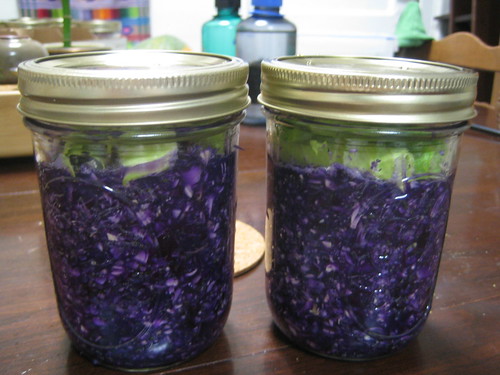Monday, March 31, 2008
What Are Fermented Foods?

Sauerkraut ready to ferment, originally uploaded by megyn.ohara.
Fermented foods are far more common than we realize; yogurt is the most commonly eaten fermented food in the United States. Sauerkraut-another name for fermented cabbage - is an example of a cultured vegetable. An Asian version of fermented cabbage, particularly popular in Korea, is called kim chee. A basic fermentation process is used to culture the cabbage in kim chee, and chili pepper, garlic, and salt are typically added to give this cultured vegetable its pungent character.
During the fermentation process, friendly bacteria both enrich and preserve the food. Lacto-fermentation neutralizes enzyme inhibitors and breaks down the glutens, sugars, and other elements that are otherwise difficult to digest. These friendly bacteria are beneficial for the digestion, increase the availability of vitamins, and promote the growth of healthy flora throughout the digestive tract.
Because bacteria and other micro-organisms exist everywhere in our environment, and because all of the foods we eat can serve as food for bacteria as well, most foods - including vegetables - will naturally ferment. Some websites encourage the use of natural fermentation as a way to increase the value of vegetables. In this context, "natural fermentation" means leaving the vegetables in a container at room temperature for 4-7 days. No additional bacteria are added to the vegetables, and no heating process is used.
Labels: bacteria, digestion, fermented, flora, healthy diet, kimchi, sauerkraut, yogurt
Post a Comment